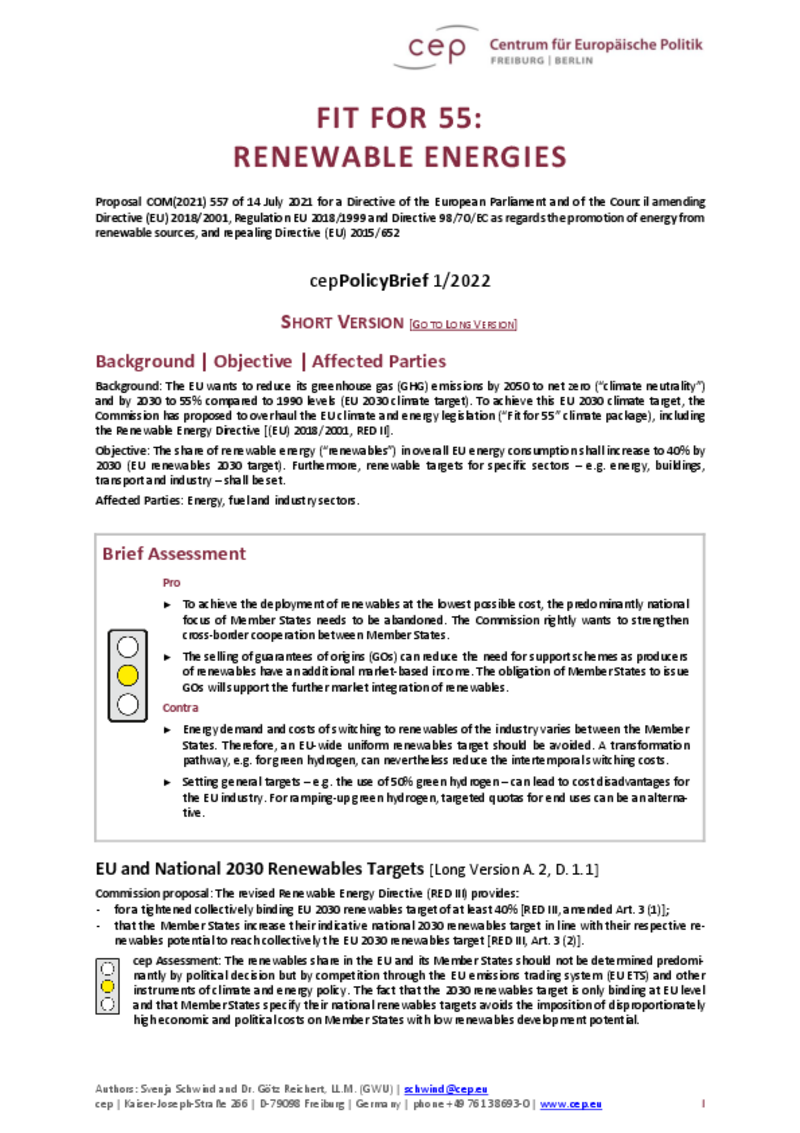
Climate
Fit for 55: Renewable Energies (cepPolicyBrief)
cepPolicyBrief
“The industry target that 50 percent of the hydrogen used should be produced by renewable sources by 2030 can lead to competitive disadvantages for European industry,” says cep economist Svenja Schwind, who examined the “Fit for 55” legislative package regarding renewable energies with cep lawyer Götz Reichert. Both warn of setting too general sector-specific targets, for example for so-called green hydrogen. To achieve the envisaged market ramp-up of green hydrogen cost-efficiently, targeted quotas for end uses with greater willingness to pay for green hydrogen – such as in aviation or refineries – could be a better alternative. This establishes a reliable demand that can be satisfied efficiently through competition between suppliers.
According to the cep experts, the target to increase the renewables share in the industry sector by 1.1 percentage points per year could be counterproductive and reduce the effect of EU emissions trading. The energy demand and hence the costs of switching to renewables varies between the Member States. “An EU-wide uniform increase in the renewables share per year in the industry sector should be avoided,” emphasises Svenja Schwind.
According to Reichert, regulatory barriers, for example complex and lengthy approval procedures, also hamper the increased deployment of renewables. Simplifications suggested by the EU are necessary, but cannot – as actually required – be implemented immediately.





